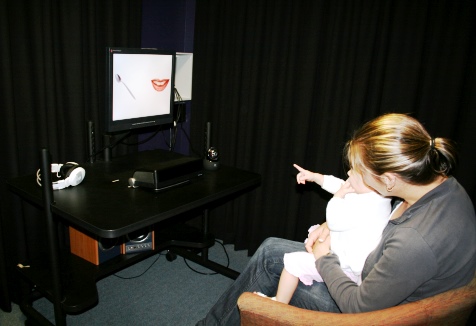Accents under the microscope

You say "ta-may-toes", I say "ta-mah-toes"… Professor Catherine Best from the MARCS Institute and the School of Humanities and Communication Arts is certainly not calling off the debate. In fact, she and her colleagues Christine Kitamura (UWS Psychology) and Jason Shaw (UWS Linguistics and MARCS) are conducting interesting research into the role that accents play when young children learn how to speak, and when adults recognise spoken words. Her two studies are funded by Australian Research Council Discovery Projects, and aim to find out more about the problems faced by typical children as well as those with developmental language difficulties, and by normal adults from different English-speaking regions.
"Accent differences draw everyone's attention; even toddlers can quickly note that someone from another region 'talks funny'," says Catherine. "As everyday listeners, we immediately notice accents that differ from our own, as well as noticing the occasional difficulties we have in understanding someone with a different accent. We find accents intriguing, informative, and a source of humour, scorn or frustration."
Catherine's projects are exploring how children develop the ability to decipher words and meanings, and how adults recognise a word is a word despite accent differences in pronunciation. In her research, Catherine will test children's recognition of newly learned words, and adults' recognition of known words, in their native accent versus the same word spoken with a different accent.
A range of children will be included in the developmental study, including those with autism spectrum disorder and dyslexia. The study's results may assist with early diagnosis and treatment of these conditions. The adult study includes English talkers and listeners from Australia, New Zealand, London, York and Newcastle UK.
This research also aims to improve automatic speech recognition technology while also helping those who learn English as a second language. It is thought that understanding the processes that infants, toddlers and adults use for recognising accented words may help discover automatic speech recognition algorithms that can better decipher the same word spoken in difference accents.
Mobile options:

